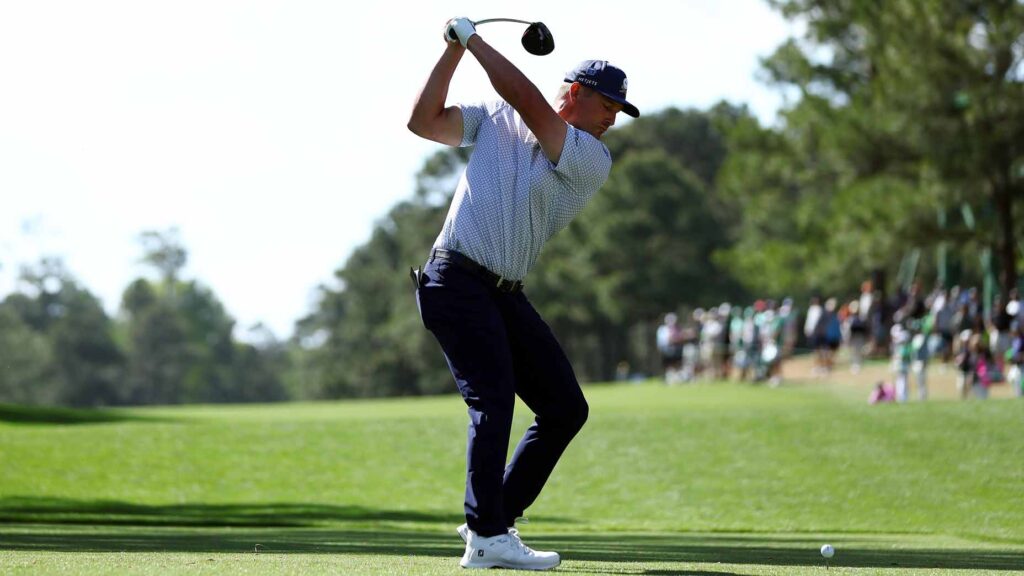Unlock Your Distance: Mastering the Art of Power in Your Golf Swing
Golf is a game that balances precision, technique, and power. For amateur golfers, one of the most sought-after skills is the ability to hit the ball longer off the tee. But the question remains: how do you hit the ball further? The answer lies in developing an efficient swing technique, which hinges on maximizing the use of ground reaction forces. Here, we’ll explore this concept and provide practical exercises that can help you enhance your swing efficiency.
The Importance of Swing Efficiency
Swinging a golf club efficiently is crucial for achieving maximum distance. While strength can certainly play a role, many muscular golfers find that without the right technique, they often leave significant power on the table. The key to unlocking your swing’s true potential lies in how you utilize your body throughout the motion. By focusing on swing efficiency, you not only ensure better distance but also improve your overall game technique.
Understanding Ground Reaction Forces
Long hitters are adept at using ground reaction forces during their swings. Simply put, this refers to the capability of pushing off the ground effectively during the downswing. If you observe the top players in golf, you’ll note that their ability to leverage these forces plays a vital role in developing incredible clubhead speed and distance. In essence, developing a deeper understanding of ground reaction forces is a game-changer for aspiring golfers.
The Challenge for Recreational Golfers
Most recreational golfers struggle with comprehending how to generate the necessary ground reaction forces. The good news is that resources like the Titleist Performance Institute (TPI) provide excellent methodologies for mastering this essential aspect of the swing. Employing specific exercises can help golfers of all skill levels develop a feel for these forces, thus translating into longer, more accurate drives down the fairway.
Exercises to Reinforce Ground Forces
1. The Golf Vertical Jump
One of the primary exercises recommended by TPI co-founder Dr. Greg Rose is referred to as the "golf vertical jump." This exercise helps golfers learn how to properly engage their core and lower body during the transition from the backswing to the downswing. Start by squatting down while raising your arms above your head. When you jump, throw your arms downward—this reverse motion mimics the counterintuitive movement found in an efficient golf swing.
2. Transition to Golf Posture
Once you’re comfortable with the vertical jump, transition to your golf posture. From your setup position, take your arms to the top of your swing, squat, and mimic the jump. As in the previous exercise, think about throwing your arms down as you initiate your downswing. This will reinforce the connection between your lower body movement and your arm positioning—essential elements for creating a powerful swing.
3. Combining Movements with a Golf Club
Now, it’s time to integrate these movements with a golf club. Place a club diagonally along your feet line, ensuring that your trail foot is behind the shaft and your lead foot is in front. As you swing to the top, move into your squat position, then think about jumping forward along the diagonal line you’ve created. This will help you combine both vertical and rotational forces, optimizing your swing gains.
Applying the Concepts on the Golf Course
Once you have practiced these exercises, the next step is to apply what you’ve learned on the course. A proper golf swing is a delicate balance of timing and force application, and harnessing the ground effectively is critical. Remember to focus on the feeling of engaging the ground as you initiate your downswing. This focus can make all the difference in your swing performance and overall distance.
Advanced Tips for Further Improvement
To further hone your skills and improve your swing mechanics, consider incorporating technology into your training routine. Devices like the Stack Radar can provide valuable data on swing speed and ball distance, thus facilitating a better understanding of your performance. Alignment with modern training technology offers a measurable way to track improvements, allowing for a tailored practice approach.
Maintaining Consistency and Avoiding Injury
An efficient swing should also prioritize your body’s safety and longevity. The line between maximizing power and risking injury can be easily crossed, especially for those who are not fully conditioned for a high-speed swing. Incorporating a proper warm-up routine that emphasizes flexibility and mobility can reduce injury risks and keep you swinging well into the later stages of your golfing career.
The Mental Game: Focus on Visualization
While physical conditioning and technique are critical, the mental game should not be overlooked. Visualization techniques can enhance your ability to execute your mechanics under pressure. Picture yourself using ground reaction forces effectively, connecting ball and club in perfect synergy. This mental layering can make your practice sessions more productive and help translate skills onto the course.
Conclusion: The Path to Longer Drives
Mastering the art of longer drives requires a comprehensive approach—combining technique, strength, and mental fortitude. By understanding how to effectively utilize ground reaction forces, integrating recommended exercises, and applying these practices on the course, anyone can improve their distance off the tee. The journey may require dedication and perseverance, but with focused effort, those long drives will soon be your reality. Embrace the mechanics, visualize your success, and prepare to dominate the fairways like never before.


